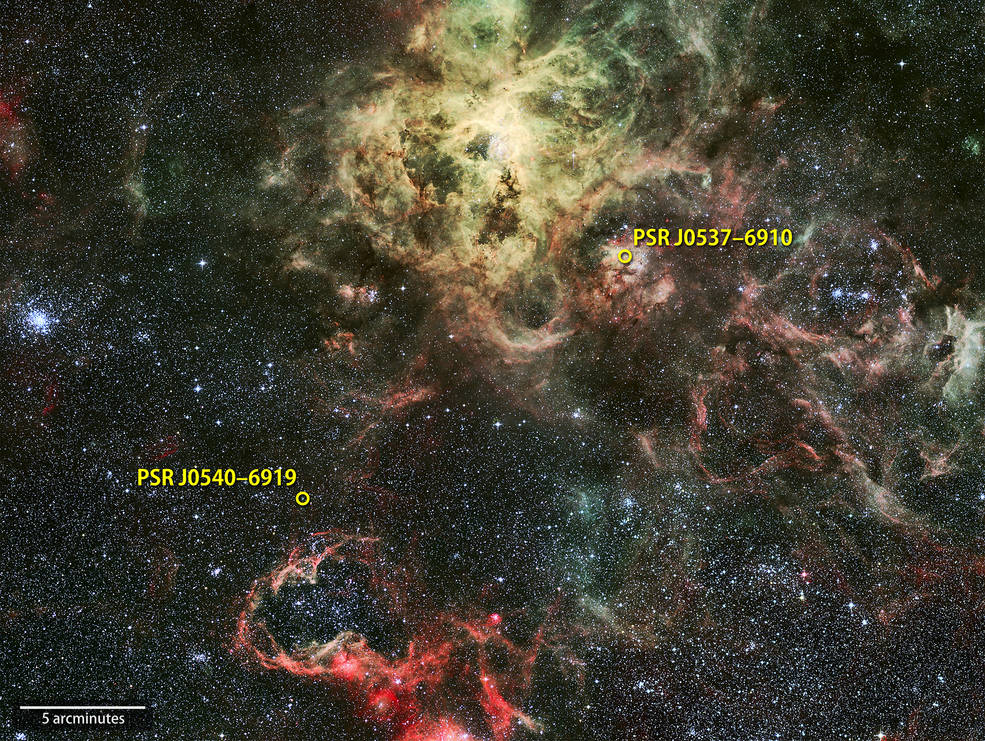The word pulsar is short for pulsating radio star, and it’s a phenomenon that occurs in space when a neutron star shows off its magnetized qualities by emitting radioactive gamma light rays. The neutron star is spinning very quickly, and as a result, those magnetic poles, which are emitting the gamma rays, are rotating with it. This is what creates the ‘pulsing’ effect as observed from Earth, and hence the name.
Scientists have now, for the first time, observed a gamma ray-emitting pulsar from another galaxy besides our own with its Fermi Gamma Ray Space Telescope.
Typically, we observe pulsars in our own galaxy, where they are most common; but one pulsar called PSR J0540-6919 has been observed inside of the Tarantula Nebula, which is located inside of a smaller galaxy outside of our own Milky Way galaxy. NASA notes that the pulsar is approximately 163,000 light years away from Earth.

The gamma rays being observed from PSR J0540-6919 are intensely bright; about 20 times brighter than the pulsar known to exist in the Crab Nebula. Interestingly, the amount of radio, X-Ray, and optical emission. It’s a relatively young pulsar, which scientists are aging at about 1,700 years old. This is very young in contrast to most pulsars, which are typically anywhere from 10,000 years old up to the millions of years old range.
"The gamma-ray pulses from J0540 have 20 times the intensity of the previous record-holder, the pulsar in the famous Crab Nebula, yet they have roughly similar levels of radio, optical and X-ray emission," said coauthor Lucas Guillemot, at the Laboratory for Physics and Chemistry of Environment and Space, operated by CNRS and the University of Orléans in France. "Accounting for these differences will guide us to a better understanding of the extreme physics at work in young pulsars."
Because PSR J0540-6919 is brighter than the pulsar from the Crab Nebula, which once held the record as the brightest known gamma ray-emitting pulsar around, PSR J0540-6919 is now being crowned the brightest gamma ray-emitting pulsar ever discovered.
NASA notes in a statement that the data observed from PSR J0540-6919 has been slowly accumulated over six years of research, and that the long stretch of time was necessary to ensure all calculations were correct and to get a clearer image of of the pulsar as the space telescope was able to capture more and more data.
With the data accumulated, scientists are hoping to learn more about how Pulsars work, and perhaps discover some more of them in further away galaxies as space telescopes continue to evolve in power and capability.
Source: NASA

